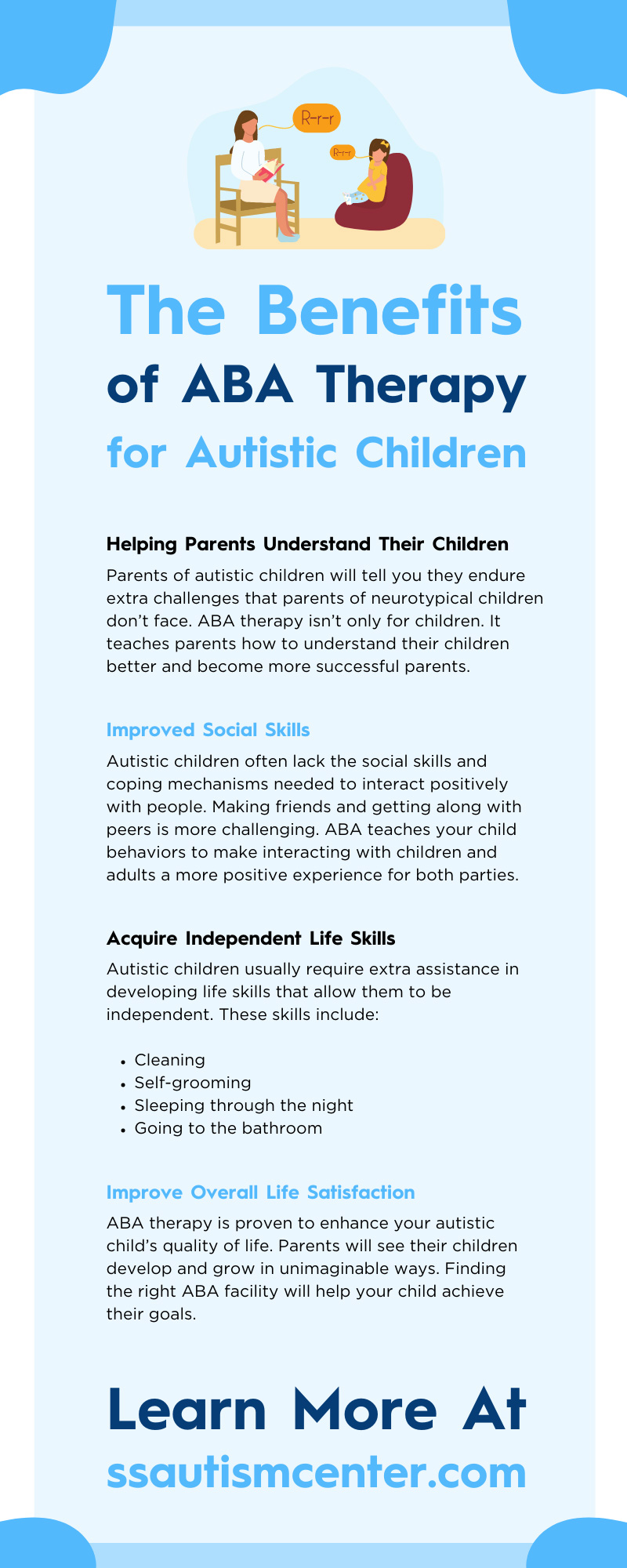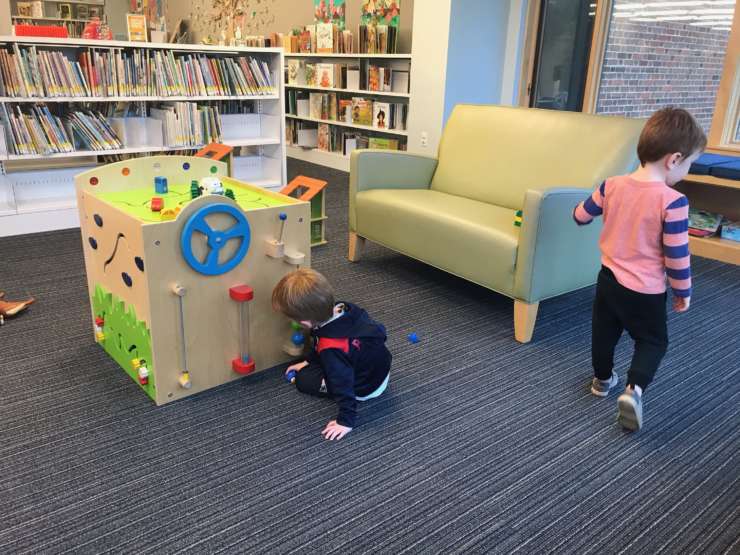Finding out your child has autism is never easy for a parent. You understand that life is going to be different from here on out. Every parent wants to provide their child with the best, and every doctor will suggest ABA therapy to help with behavioral issues and more. If you’ve never heard of ABA therapy, you’re not the only one. This blog will explore the benefits of ABA therapy for autistic children and explain the treatment.
What Is ABA?
ABA stands for Applied Behavioral Analysis. Psychologists developed this specialized therapy based on the science of behavior and learning. It helps parents, therapists, and children understand how the environment affects behavior, how behavior works, and how the child learns.
ABA therapy applies our understanding of how behavior works to real situations. For example, if a child has difficulty with transitions, ABA will teach the child coping mechanisms to use during challenging changes. These situations could happen during school, at home, in the store, or with friends. The therapist wants to increase helpful behaviors and diminish or eliminate harmful ones. Damaging behaviors affect learning, friendships, other relationships, and different aspects of life.
Specific Areas ABA Helps
Since the 1960s, ABA has helped children with autism and other developmental disorders. Methods of behavioral analysis have been studied and implemented for decades. ABA therapy can help with decreasing problem areas, improving communication and language skills, and improving focus, memory, academics, social skills, and attention. Many learners have gained various skills from ABA therapy, including learning a new language and adapting to a healthier lifestyle.
How Does ABA Work?
Many techniques used in ABA therapy help us change and understand behavior. It’s a flexible treatment that each therapist can adapt to meet the unique needs of each child. Plenty of locations across the country offer ABA therapy. South Shore Autism Center is an autism center in Massachusetts. We provide services in our center, virtually, and at home. We offer a wide range of services to ensure we meet the needs of every child. Our mission is to be a warm and welcoming place where autistic children can grow and learn. We want the families to join a supportive community of knowledgeable specialists and therapists.
ABA therapy also teaches useful skills children will use in everyday life. This therapy often involves one-on-one teaching along with group instruction.
Using Positive Reinforcement
One of the main strategies used in ABA therapy is positive reinforcement. A child is more likely to repeat the behavior when they receive a reward or positive reinforcement. Their behavior will begin to change as they understand expectations.
The therapist will identify a goal behavior; every time the child uses that skill or behavior successfully, they’ll receive a reward. This reward is meaningful for each child. A few examples of rewards include:
- Extra playtime
- A toy
- A book
- Watching a video
- A treat
The “A-B-Cs”
A-B-C stands for antecedent, behavior, and consequence. This method is another essential part of ABA therapy. Behavioral therapists will look at the three different steps to understand specific behavior.
The first step is the antecedent. What is happening right before the behavior? It could be verbal, physical, or something else, and its origins could be internal, come from another person, or come from the environment.
The second step is the behavior. It’s the child’s lack of response to the antecedent. This reaction could be a verbal or physical reaction or something else. The third step is the consequence, which directly follows the behavior. If the desired behavior occurs, the result will be positive reinforcement. If not, therapists will display no reaction.
Why are the “A-B-Cs” important to understand? It provides insight into why the behavior is happening and how different consequences affect if the behavior will happen again. Continued practice will help the child replace harmful behavior with those that are helpful.
Benefits of ABA Therapy
As you can see, ABA is an incredibly beneficial service for autistic children. The goal is for your child to gain more independence, tools, and strategies to succeed as they grow. Below, you’ll find more specific goals to explain the benefits.
Helping Parents Understand Their Children
Parents of autistic children will tell you they endure extra challenges that parents of neurotypical children don’t face. ABA therapy isn’t only for children. It teaches parents how to understand their children better and become more successful parents.
Your child’s ABA therapist will work with you to create goals and to understand what your child needs to work on most. Autistic children aren’t always able to communicate their needs, and ABA therapy will provide those skills to understand your child’s needs on a deeper level.
Improved Social Skills
Autistic children often lack the social skills and coping mechanisms needed to interact positively with people. Making friends and getting along with peers is more challenging. ABA teaches your child behaviors to make interacting with children and adults a more positive experience for both parties.
ABA will introduce social cues and work on communication skills to help them carry on conversations. Small talk and discussing non-preferred topics can be challenging for people with autism.
Acquire Independent Life Skills
Autistic children usually require extra assistance in developing life skills that allow them to be independent. These skills include:
- Cleaning
- Self-grooming
- Sleeping through the night
- Going to the bathroom
Self-care skills don’t come easy for children with autism, and helping them learn these skills can help your child live a more independent life. Your child’s ABA therapist will determine the best methods to provide your child with more autonomy.
Improve Overall Life Satisfaction
ABA therapy is proven to enhance your autistic child’s quality of life. Parents will see their children develop and grow in unimaginable ways. Finding the right ABA facility will help your child achieve their goals.
If you have a child with autism, begin looking into ABA therapy as soon as possible. As you can see, it’s one of the most beneficial things you can do for them. You’ll be able to support your child better, and you’ll see improved behavior patterns. If you have any questions, reach out to South Shore Autism Center. We’ll get you on track and your child enrolled in our incredible services.





Comments (0)